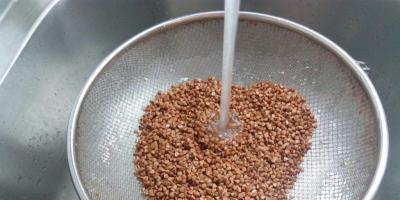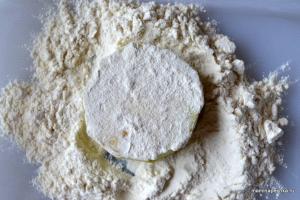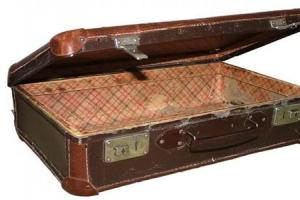Starting from September 1, 2013, it becomes especially profitable to save electricity, because... It is from this day that the Decree of the Government of the Russian Federation on the application of social standards for electricity consumption starts in 7 regions of the country. The essence of the resolution is that if you exceed this norm (50 - 150 kWh per person per month - the numbers are different for different regions), then each excess kilowatt-hour will cost approximately 50% more than the “social” one. This government initiative is especially relevant for owners of dachas and cottages, since it is in a private house that electricity consumption is greater, and its quantity and structure have a range of adjustment and, as a consequence, a reduction potential that is wider than in a city apartment.
There are a lot of tips on saving energy. The advice is mostly correct, but following many of them has little effect and causes significant inconvenience. What is worth, for example, the recommendation to disconnect the TV from the power supply. Yes, indeed, you will save 50-100 rubles a year on this procedure, but every time you have to climb to the outlet...
Below we analyze those components of the total energy consumption of a country house, which, firstly, are quite significant, and secondly, if reduced, a significant change in the existing lifestyle of the owners of the house will not be required.
The main items of electricity consumption in a country house are:
1. Heating (electric);
2. Hot water supply (electric boiler);
3. Autonomous sewerage and pumping group;
4. Lighting;
5. Household appliances.
For a standard house with an area of 200 sq.m. with a family of three living in it, the average monthly electricity costs (costs averaged over the year) for these items are the following approximate values.
Electricity consumption in a country house

As can be seen from the diagram, in a gasified house it will not be difficult to meet social energy consumption standards, and then only in those regions where they do not exceed 130 kWh/month per person. In a house without gas, “social” electricity consumption is almost impossible, but significantly reducing costs without reducing the quality of life is quite possible.
How to save energy?
2. HOT WATER SUPPLY. It will take approximately 300 kWh/month. electricity (100 kWh/month per person). This is 3600 kWh per year, which costs 11,000 - 15,000 rubles/year or 900 - 1,200 rub/month. Also tangible money. Savings here are possible in two main ways: reliable insulation of the hot water supply pipeline to prevent heat loss even at the approaches to the tap or shower, as well as the use of modern plumbing fittings.Water consumption in various types of mixers

3. AUTONOMOUS SEWER AND PUMPING GROUP. The main modern autonomous sewage systems for a country house are TOPAS type systems, consuming approximately 50 kWh/month. It is almost impossible to save money here, because... the system is operational only when the compressors are constantly turned on and the drain pump is periodically turned on. But, there are many other pumps in the house: a pump in the liquid heating system, a water supply pump (in a well or well), pumps in the irrigation and pool cleaning system. The total monthly electricity consumption for this group of equipment can also be estimated at 50 kWh. In total, for an autonomous sewerage system and a pumping group it is required 100 kWh/month. The principle of saving here is simple - reasonable consumption of heat and water (see paragraphs 1 and 2), as well as the elimination of idle operation of irrigation pumps and water filtration in the pool.
4. LIGHTING. Ordinary incandescent lamps in our example will take about 70 kWh/month. There are only two ways to save on lighting: “turn off the lights when leaving” (yourself or install automatic sensors) and the use of energy-saving fluorescent or LED lamps. There are skeptics who claim that these lamps do not justify their high prices and burn out quickly, but, obviously, they gained their negative experience by using low-quality energy-saving lamps from little-known manufacturers. By purchasing compact fluorescent light bulbs from Philips (Holland), General Electric (USA), OSRAM or Radium (Germany), you will receive the quality declared by the manufacturers, which will allow you to save up to 90% of the energy spent on lighting, and the high price of such lamps is compensated with a plus by a large their service life. An analysis of the economic efficiency of energy-saving lamps shows that savings from their use can amount to from 560 rub.(fluorescent lamps), up to 700 rub.(LED lamps) per bulb per year ().
5. HOUSEHOLD APPLIANCES. A modern house contains household electrical appliances with a total power of more than 50 kW, which is 68 horsepower, like a Zhiguli! Good thing we don't include them all at once! The actual electricity consumption for household appliances for a family of three in a gasified house is, as can be seen from the figure, 140-216 kWh/month.Electricity consumption of household appliances

A special item of energy consumption in a house without gasification is the kitchen electric stove and electric oven. These “devices” together require about 100 kWh/month.
The most radical way to save energy when using household appliances is to replace old equipment with new equipment of a higher energy efficiency class. Such updating of the composition of household appliances can provide approximately 50% energy savings. Well, and, of course, you shouldn’t place the refrigerator near the heating radiators, turn off the iron in time, place the pan on the burner corresponding to its diameter, choose the right washing mode, don’t “idle” the computer around the clock, unplug the chargers from the socket after using them. use and eliminate other similar irrational expenses.
We can conclude the presented analytical review on an optimistic note: with a rational, but not at all ascetic, approach to energy consumption in a gasified country house, it is quite possible to fit into social norms, and in houses without gas, electricity costs can be reduced by almost half.
P.S. It is not relevant to talk about such consumable items for the energy supply of a home as a large sauna with an electric stove, a heated swimming pool and other attributes of luxury country life in terms of saving money, because their owners, at least for now, are unlikely to consider it necessary to approach social norms of consumption.
Good afternoon, dear readers of the online magazine World Mans. Today I found interesting information that everyone needs, from which there is a huge current in our everyday life. Are your monthly utility bills about to send you into debt? Do not despair. This problem is familiar to many. Unfortunately, it is true that the amounts we pay for maintenance and comfortable living in our own apartments often threaten to exceed four-digit numbers, and the quality of these services remains quite controversial. What measures can be taken to live like a human being and not go broke on housing and communal services? The answer is obvious - you need to save money. Let me give you a few recommendations on the topic: how to save electricity in an apartment, house, or country house, so let’s get started.
15 options to save
Despite the fact that every room in a modern house is equipped with technical appliances, by willingly using all the benefits of civilization, you can significantly save on electricity if you know how to use household appliances correctly.
- A well-known proverb says: “When leaving, turn off the light!” Having paraphrased it a little, you can add not only about light, but also about computers, televisions, microwaves and other household electronics. For your information, even when the host’s equipment is turned off, it continues to work and waste the energy it needs. For example, a computer that you carefully put into standby mode spends on average up to 3.5 kW per month. Therefore, make it a rule to unplug all appliances every time you leave your home for a long time.
- The moment another incandescent light bulb burns out, think about replacing it with more modern energy-saving lamps. This new product will allow you to save a lot on electricity, and will also last 7 times longer. Of course, it is a little more expensive than ordinary light bulbs, so familiar to our eyes. And yet, don’t be stingy: in the first year of operation, this purchase will fully pay for itself. There is another feature of energy-saving lamps, which is that they take a long time to light up. It will take several minutes for such a lamp to fully illuminate the room. This circumstance may cause you some discomfort when using corridor spaces, where, as a rule, no one lingers. In such cases, it is more advisable to purchase an energy-saving lamp of higher power. And there will always be light in the corridor, even when the lamp warms up, and you will spend less money on lighting.
- When thinking about purchasing new household appliances, pay attention to its class. The designations on the labels class A, A+, A++ indicate that this is a modern model that can reduce your electricity costs by 30%.
- Surprisingly, even an electric kettle, if used at the right time to heat a specific amount of water, can help save you money. Just don’t forget to descale it on time. And the water will boil faster, and the kettle will have to work less. Another trick. If you cook on an electric stove, boil the water for cooking in an electric kettle, and then pour it into a saucepan and put it on the stove. The water in the kettle will boil much faster, which will save money.
- Remember that a heated electric stove, even after it is turned off, can remain hot for a long time. Use this feature when you cook and continue to save. Also, the rational use of the heat emitted by the burners will be facilitated by correctly selected cookware in diameter.
- Try to defrost your refrigerator periodically. This action will allow him not to waste extra energy on enhanced freezing. It’s also good to put it in a separate place from the stove, radiator and window so that sunlight does not fall on it.
- When using a washing machine, try to load as much laundry into it as required by the instructions. Washing fewer or more items will require up to 30% additional energy.
- When you are going to iron, distribute the laundry so that at the end there are small parts left that can be ironed with the iron turned off and cooling.
- A vacuum cleaner with dirty filters will require more energy. It is more difficult for such a device to work, and it begins to waste more power. Therefore, take care to timely replace or clean removable filters.
- Many modern PCs have a very rewarding power saving mode. Thanks to this function, resource savings will be up to 50%. Don't forget to enable this important setting.
- Use the air conditioner only with the windows and doors closed. Don't waste electricity heating the street.
- Use mainly room lighting with spotlights. This will be much more economical than turning on a chandelier all the time, which will uselessly give light to places where you don’t need it.
- Take advantage of the sunshine. Open the curtains, remove tall plants from the windowsills, and allow natural light to bring light into your life. Clean your windows more often. Dirt and dust can reduce light transmission by 30%.
- If it is possible to install an electricity meter in your home, the payment for which during the day and night differs by approximately 30%, be sure to take advantage of this opportunity. You will have a real chance to reduce your energy costs significantly. You will be able to turn on the most energy-intensive appliances at night (washing machine, heating boiler, heated floor), thereby saving significant money. The Distribution Zone will help you install a meter that counts energy differently during the day and at night, where they will seal the meter and give you all the necessary papers. The average price of this device will be approximately 2000 hryvnia.
- In Europe, where they understand a lot about saving money, the Smart Home system has been actively used for a long time. Today we also have the opportunity to install it in our apartments. It is a whole complex of devices and sensors that respond to the slightest changes in space. This system allows you to use 10 times less energy. The only negative is the significant price. Of course, over time it will completely pay for itself. But this will take a lot of time.
How to save energy if there are many appliances in the house? This question faces many residents of apartments, high-rise buildings, and the private sector.
Whatever the room where you live, even at the dacha, and due to the ever-increasing prices for utilities, the question of saving becomes more relevant.
Saving electricity with energy-saving lamps
In fact, the issue of saving is not difficult to implement on a daily basis. It’s all about awareness of the nuances of using devices, as well as the stability of applying the necessary set of measures, and this very quickly becomes a person’s habit.

It’s worth thinking about what type of lamps you use and what others there may be.
So, light in rooms is almost the main category in terms of energy consumption, therefore, if you can provide all rooms with economical lamps, you will spend less energy.
In order to save money, it is worth purchasing energy-saving lamps. They will last longer and use less electricity, however, when using this type of lighting, keep in mind that:
- When buying an energy-saving lamp to save electricity, you should not touch it with your hands, because this shortens the life of the lamps;
- If you do pick up the lamp by hand, gently wipe the surface of the lamp with a cotton pad. The cotton pad must first be moistened with a small amount of alcohol;
- As a rule, energy-saving lamps are more expensive, but they have a warranty period.
Another interesting option for saving electricity is to purchase one with halogen lamps. There are also a number of features here:
- halogen lamps are economical, but do not last long;
- Halogen lamps must be replaced immediately after one of the entire set of lamps has burned out.
Saving electricity when using household appliances
Few people know, but we save energy even when the appliances are placed correctly in the kitchen. If the refrigerator is located near the stove, be it gas or electric, more energy will be wasted.

Also, the refrigerator is incomparable with the heating system and boilers. That is why it would be appropriate to place the refrigerator in a separate corner or even outside the kitchen, which is especially important even for aesthetic purposes of improving the appearance of the interior.
Why a refrigerator? How is this even possible? In fact, there is no magic here.
Imagine how much heat a stove, oven or boiler generates, but it is designed to cool the inside of its device, and the higher the outside temperature, the more work it has to do.
The temperature changes automatically, so it is in your interests to move the refrigerator to a place where it is already cool.
It is also important to understand that a refrigerator consumes about 20% more energy if ice has accumulated on the walls of its freezer, because now the device needs to work in enhanced mode.
The same applies to cases where many people do not pay attention to what temperature the food is sent to the refrigerator.
Hot foods will generate heat, and the refrigerator will have to deal with it, at your expense.
Requires the necessary care indicated in the instruction manual.
So, if your air conditioner has not been cleaned for a long time, it is likely that it is already dirty, and freon may leak. This means that the device not only consumes a lot of energy, but also risks failure.

By following these simple tips that will quickly become habits, you can save about 50% on energy:
- When you leave, be sure to turn off the lights. However, this rule should not be abused either; it all depends on the lamps that are installed in your home. In the case of halogen lamps, on the contrary, the light cannot be constantly flicked on, because the lamp will quickly burn out, and instead of saving energy, you will incur additional costs;
- Wipe lamps and shades with a regular cloth soaked in water. This will help avoid the illusion when it seems that the lamp is shining poorly and you need additional lighting, which will save electricity;
- when we do, we need to take into account the lighting features of the premises. Light walls and a light ceiling will reflect light better, so your room will initially be lighter, which means less energy will be spent on artificial lighting;
- If your room is cold, do not rush to turn on the portable battery. It is possible that the radiators are taking heat from the stationary heating system. In this case, foil placed behind the batteries will help;
- purchase class “A” household appliances. In fact, few people pay attention to this, but in vain;
- think, perhaps your wiring is outdated and can no longer withstand the load. This may also affect your bills from the energy company;
- Last but most importantly, never leave your devices in standby mode. Thus, the TV, microwave, kettle and many other appliances should be unplugged immediately after their use.
If you just turn off the button on your TV remote, you know the screen is black, but all the processes on the TV are still running. This not only increases your bills but also damages your device. Let's save electricity together!
The most ordinary savings and enterprise allow us to do a lot, especially when it comes to dachas. Therefore, today we are studying practical techniques that will help us become economical summer residents.
- Saving water at the dacha
- Saving money at the dacha and practicality
- Everything at the dacha with your own hands
- We turn “air” into money
Our article will not contain complex or abstruse things, but only what we encounter every day on the territory of our own site. Due to constant busyness, fatigue and many distractions, we don’t even pay attention to how we can seriously simplify our life. Judge for yourself, the same greenhouse made of plastic bottles, flower beds made of tires or a fence made of wheels... not everyone has thought about this. These materials most often end up in the trash, but they can become a real find.
Our article on the topic of economy and practicality in the country is real social material, which we encourage all readers to study and supplement. We even have hopes that we will be able to create our own little summer cottage Wikipedia, right here, in the comments, where each of you can submit your own idea, and thereby make the life of thousands of summer residents easier, more interesting and more fun. Well, then, let's get started!
Saving water at the dacha
A sore point, especially when the plot is large. We need to water the vegetable garden, garden, flower beds, supply water to the greenhouse and a small school with young bushes, don’t forget to irrigate the country paths from the dust that stands in a column... Having calculated the total water consumption, you immediately understand that almost 30-40% goes in an unknown direction , and therefore watering needs to be optimized as much as possible.

We learn to save water at the dacha - we water only the plants, turn off the water after using the shower and sink.
Firstly, high-quality taps, pipes and filters, connections and mains, which will reduce water losses and will fully pay for themselves in a year or two. Secondly, the correct use of water in the country - drip irrigation for the vegetable garden and greenhouse, manual, economical and strictly targeted watering in the garden, where water is needed specifically by the trees, and not the entire soil.
In addition, basic water savings include timely shutoff of water in the shower, sink, and even when watering. According to statistics, up to 20% of losses are concentrated on this factor.

Saving electricity at the dacha
Electrical energy is expensive, and we spend an enormous amount of it. Heating the house and heating water, cooking and washing things, operating pumps in wells and swimming pools, basic lighting of the cottage and decorative lighting of the garden.

Of course, just turning off the lights is the easiest way, but this is not saving, it’s mocking ourselves, and therefore we are looking for practical ways to save.
- Firstly, install energy-saving lamps, but not cheap ones, otherwise you can get the opposite effect (cheap fakes burn out quickly, but are expensive).
- Secondly, the use of natural coolants - the water in the shower heats up well in a tank in the sun, if it is of high quality, and the house is heated with wood, provided there is a potbelly stove or stove.
- Thirdly, there is always the possibility of cooking a variety of delicacies over the fire - shurpa, fish soup, smoky soups, grilled vegetables and meat, shish kebab, smoking and so on.
What do you think of the idea of installing a windmill or solar panels at your dacha? Of course, such a step will have to be carefully considered, and you will have to spend money in the first stages, but then you can save a significant amount of money!

Saving electricity is a serious issue for many of us, and therefore it’s worth thinking about... perhaps using electric pumps less often, dynamic lighting of the area, using rechargeable batteries in the country, etc.
Saving money at the dacha and practicality
By saving water and light, we save money that we do not spend and use not to pay bills, but for our own use - on seedlings, seeds, fertilizers, and so on, but the money itself that we have saved can learn not to spend, and even multiply.
In this section, we would like to focus on a lot of things, but gradually, because you yourself have noticed some points more than once, but have never taken them into account as an opportunity to save!

Practicality of using nature
Let's say there is a river or pond, waterfall or stream near the dacha. It is here that you can always find gravel for small-scale country construction (gazebos, supporting walls, barbecue facilities, etc.). In addition, there are large stones that are suitable for paving, decorating lawns, and creating flower beds.
Near the water you can also find clay, which is not only an excellent binding material, but also a plastic mass for repairing houses, sheds, and other buildings in the country.

There are always a lot of plants near a river or other body of water, which can be transferred to a summer cottage pond so as not to spend money on them; you can also take sand from here for construction, if there is any on the shore. And what’s most interesting is that if a body of water is nearby, you can draw water from it.
Any ditch or small ravine in the countryside becomes a natural compost pit in which you can prepare long-lasting compost from branches and wood chips. You can also throw away organic waste here without bothering with removal and without incurring transportation costs.
Using construction waste for good
Here, too, I want to establish order so as not to get confused.
So, a collapsed barn can become a donor of boards and timber for a new one. Not all of the material will be usable, but some of it can definitely be useful. If not, boards and logs can be used for sawdust and free mulch, to make, say, the same compost. In addition, from some elements it will be possible to build boundary fences at the dacha, put wood into the fireplace or barbecue, instead of expensive firewood.

Any old metal arch, fence or frame of something easily becomes a “supplier” of scrap metal for the construction of small architectural forms, vertical flower beds, helps organize supports for plants and seedlings, which in a new form in stores and on the market are quite expensive. In addition, if there is a lot of metal at your dacha, try to set aside a day to properly cut it, weigh it and recycle it. Better you than someone else in your absence!
The broken stone and brick left after construction becomes an excellent material for filling in construction, creating cushions for light foundations, as well as for drainage, which we need very often. Sand, crushed stone, screenings and small waste can also be used for country houses, filling holes with similar waste, drying mud and puddles in the country.

Plastic and glass bottles are also considered garbage, but they find excellent use in the garden area. Original crafts, decorating houses and flower beds, creating all kinds of exclusive solutions based on them, and so on. Remember the cost of a greenhouse made from plastic bottles or an urn, which will cost you a lot on the market.
Everything at the dacha with your own hands
We all know electricians and plumbers, builders and ordinary workers who are ready to charge us for certain services. But if you think about it constructively, you and I can do almost everything on our own. We built gazebos and insulated verandas, renovated the house and installed windows in the country house, assembled sectional fences and installed gates. In addition, not so long ago we talked about water supply to the dacha, sewerage and lighting, and raised topics about the construction of barbecues and stoves. Greenhouses are not a question for us at all, sheds and country furniture are very easy, so why pay people for work that we can do in the country ourselves? Is this not the main treatise of saving?

We turn “air” into money
In fact, we will not sell air, but will only offer you some options not only for saving, but also for making money at the dacha... after all, this is practicality, isn’t it?
Selling berries and fruits is understandable, but you can also sell seedlings, greens from greenhouses, and the remains of seedlings. Or you can grow it all at once for sale, for example, by making a winter thermos greenhouse, growing dill and parsley on the windowsill.

Sell vegetables, fruits and herbs, do not let them simply and “free” rot on the ground or on trees.
We have already talked about scrap metal, but let us remind you again - if you have it, urgently put it into construction or sell it for money. As usual, expensive “garbage” at the dacha, left unattended, does not stay in place for long.
Another option for making money is selling firewood. For example, you are clearing out an old garden to renovate it, but you cannot find a use for the logs. You can spend a day sawing the harvested trees into several cubic meters of firewood and selling it to your neighbors.

If not, our articles on creating rutaries and decorating stumps and logs will be useful. If you want, you can always make a wonderful thing for your garden with your own hands, and then sell it for money.
One of the ways to save electrical energy (video)
We have presented you only a small part ways which will help not only save on the dacha, but also earn . Let's help each other, share comments, use our own knowledge and experience not only for the benefit of ourselves, but also of other summer residents, because we have no competition, only support!!!
Now we can no longer imagine your life without electricity and heating. Our entire daily life involves the use of many electrical appliances that provide us with the necessary level of comfort. Today we will talk about how you can save electricity at home.
The diagram on the left shows the energy consumption structure for a family of 3 people.
Every year, electricity and heating costs increase due to higher tariffs and an increase in the number of electrical appliances used. Since energy reserves are very limited, the cost of electricity increases annually by about 15% and, accordingly, our payments for electricity also increase.
Therefore, more and more people are starting to think about how to save electricity at home.
In addition, saving electricity will reduce the consumption of natural resources and reduce emissions of harmful substances into the atmosphere, and therefore make a feasible contribution to the preservation of our rivers, lakes and forests.
By saving 100 W of electricity, we can save 48 kg of coal, or 33 liters of oil, or 35 m3 of natural gas.
On average, a family of three living in an apartment of 50 m2 pays about 59% of the total amount of utility bills for energy resources, of which: 32% is heating and hot water supply, 15% is electricity, 12% is gas. 
1.Insulate door and window openings with special insulation.
After all, the main heat leaks occur through windows and doors. 
2. Install new energy-efficient windows, preferably double-glazed ones.
If you have a balcony or loggia, then glaze them too. This is the most effective way to save heat in the house. 
3. It is necessary to properly ventilate the room.
Ventilate with the heating off!
Full ventilation for 2 minutes every 3-4 hours retains much more heat than constant partial ventilation. In winter, 2-3 minutes of complete ventilation is enough. In spring and autumn - up to 15 minutes.
4. Do not cover batteries with curtains or decorative slabs and panels.

This will prevent electricity leakage (losses can be up to 30%) and reduce the risk of damage to household appliances and short circuits.
2. Turn off electrical appliances that are in standby mode(standby mode) - TV, stereo, DVD player. 
Most devices work actively for several hours a day, and the rest of the time they are in standby mode, which wastes a significant amount of energy.
3. Organize proper lighting.
A. Make the most of natural light (use light curtains, light colors on walls and ceilings, wash windows more often, do not clutter window sills.) This will make the room brighter.
b. Use the principle of zonal lighting - it is necessary to rationally use general and local lighting. General lighting is intended for general lighting of the room (chandelier). Local lighting (lamps, sconces) allows you to illuminate dark corners of the room.
The combination of local and general lighting (combined lighting) allows you to use light more rationally - to illuminate only the area of the room that we need. As a result of the installation of combined lighting for a room of 18-20 m2, up to 200 kW/h is saved.
4. Replace traditional incandescent lamps with energy-saving ones.
They consume several times less electricity and last several times longer.
5. Turn off lighting and other electrical appliances that you do not need at the moment.
When leaving, turn off the lights.
6. Wash lamps and shades more often.
How to save energy in the kitchen and when preparing food
An electric stove is the most energy-intensive household appliance, accounting for more than half of all electricity consumed. By following simple rules and techniques when cooking, you can save a significant amount of energy.1. When cooking in a saucepan, you need to turn on the burner at full power only until the water boils. As soon as the water boils, immediately switch the heating of the burner to the minimum position, in this case the energy consumption will sharply decrease and the cooking time will not increase.
2. Be sure to tightly cover the pan with a lid. When cooking in an open container, energy consumption increases by 2.5 times. Even if the lid is slightly open, this is equivalent to the fact that there is no lid at all, because... heat is lost with the escaping steam.
3. Use cookware with a bottom diameter that matches the size of the burner. The diameters of the bottoms of the pans must be greater than or equal to the diameters of the burners of the electric stoves on which they are placed.
4. Do not allow water to boil violently on a burner turned on at full power, because boiling on a heated stove is sufficient at much lower power.
5. If you turn off the electric stove burner a little earlier before the end of cooking, you will save electricity due to residual heat.
6. When cooking vegetables, use a minimal amount of water in pans.
7. Choose pots that are the right size for the amount of food you need. If you need to cook a small amount of food, it is better to do it in a small one. saucepan on the smallest burner.
8. The bottoms of pots and pans must be smooth and clean so that there is close contact with the burners. Dishes with a crooked bottom or with carbon deposits require 60% more electricity.
9. When purchasing cookware, choose frying pans and saucepans with thick bottoms and glass lids.
10. Use pressure cookers. They save a lot of energy and time. The cooking time in them is reduced by three times, and energy consumption is halved. This is achieved thanks to the tightness of pressure cookers and a special cooking mode - the temperature inside the cookware reaches 120 degrees due to excess steam pressure.
11. Stainless steel cookware with a thick polished bottom ensures good contact with the stove and saves energy. Aluminum, enameled, and Teflon-coated cookware is not economical.
12. The condition of the electric stove burners is of great importance. If one or two spirals burn out in a burner or the burner swells due to overheating, electricity consumption increases up to 50%. It needs to be changed urgently.
13. Use special electric heating devices (frying pans, pots, grills, coffee makers, etc.), in which the dishes turn out more tasty and of higher quality, and much less electricity is spent. Use an electric kettle, which itself saves energy by automatically turning off when water boils in it. Boil only as much water as required at a time.
14. Timely removal of scale inside electric kettles can significantly reduce energy consumption.
15. Use thermoses or potters to keep water and food warm for long periods of time.
16. Do not use the switched-on electric stove burners to heat the room; this is uneconomical, ineffective and dangerous.
17. Use microwave ovens to heat and cook food; they will save you time and energy.
What we usually do uneconomically:
■ choosing the wrong dishes - energy loss 10% -15%
■ Do not close containers tightly when preparing food. - losses 2% - 6%
■ We use too much water - losses 5% - 9%
■ We use dishes that do not fit the size of the burner - losses 5% -10%
■ We do not use residual heat - losses are 10% -15%
And to reinforce the material, here is a wonderful infographic from the United Energy Company. The picture is clickable. 
By using these simple tips you can significantly reduce your energy costs and save money.
Let's repeat the basic rules:







To save energy in your apartment, you need to learn how to use it rationally. At the same time, in addition to significant savings in energy bills, you are making a very important contribution to solving global environmental problems.
The article uses materials from the Information and Consulting Center for Energy Saving (ICC). 








